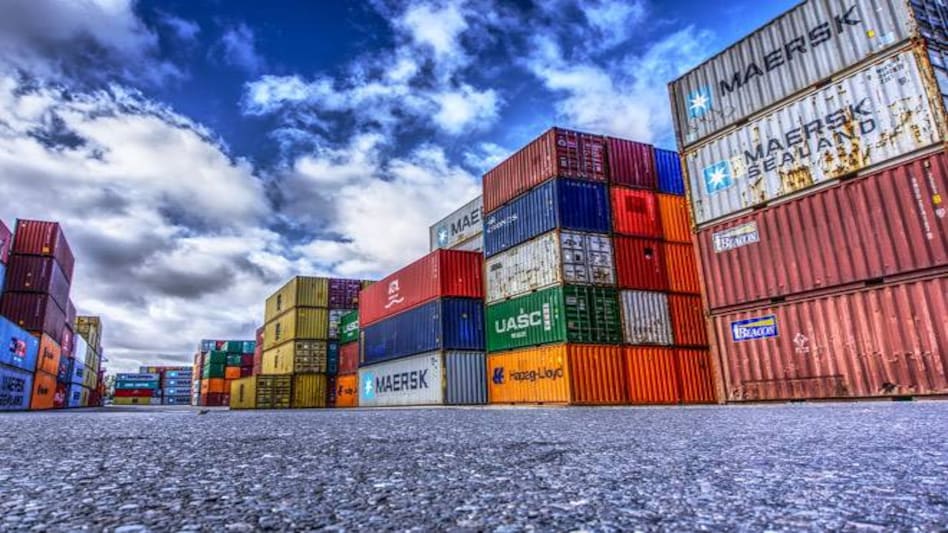 To enable the setting up of warehousing clusters across the country, the government should simplify land acquisition policies by placing emphasis on digitisation of land records
To enable the setting up of warehousing clusters across the country, the government should simplify land acquisition policies by placing emphasis on digitisation of land records To enable the setting up of warehousing clusters across the country, the government should simplify land acquisition policies by placing emphasis on digitisation of land records
To enable the setting up of warehousing clusters across the country, the government should simplify land acquisition policies by placing emphasis on digitisation of land recordsUnprecedented in its scale and spread, the outbreak of the COVID-19 pandemic battered world economies, threw global supply chains into disarray, and brought international trade and commercial activity to a complete standstill. The pandemic put the Indian economy into a tailspin and exacerbated the downturn across several key economic sectors.
The pandemic has created a slew of operational challenges for the $160 billion Indian logistics sector as well, yet it remained largely functional and facilitated the smooth movement of goods and services despite the labour and cash-flow issues.
Trucks plied at the peak of the lockdown, warehouses maintained operational efficiency despite harsh curfews, and Exim supply chains continued to operate seamlessly. Though India's logistics sector has largely remained resilient to the adverse effects of the pandemic, it seeks the unveiling of key policy measures in the Budget 2021 that would help the industry bolster the nation's growth trajectory.
The priority focus of the budget should be to encourage the adoption of digital tools and solutions across the logistics value chain through a digitalisation transformation strategy.
Also Read: Budget 2021
Digitalisation will lead to an improvement in the functional parameters of freight operations and provide data-driven insights into port management. It has the potential to facilitate the creation of a sustainable and streamlined supply chain management.
With a view to create a favorable ecosystem for enabling large-scale tech adoption, it is highly important to attract and sustain the right global VC funds by fostering a private sector investment climate, rather than solely depending on government-managed funds.
A key focus area of the budget should also be equipping workforces in the logistics arena with the right technological skillsets and know-how to tackle crucial infrastructural and operational challenges.
As India rapidly transitions to a digital economy, it is vital for younger personnel entering the logistics and supply chain domain to develop the requisite technological competencies and knowledge to handle global supply chain complexities.
Rising diesel prices are adversely impacting the fuel efficiencies of logistics companies. High fuel costs are eroding the wafer-thin profit margins of logistics players as it is not possible to pass on the additional cost to clients.
The government needs to ensure that fuel prices remain stable and do not fluctuate to make freight transport fuel-efficient and maintain visibility on direct costs.
The government also needs to review the 28% GST on new trucks. It is also important for the government to offer tax incentives on the replacement of old trucks with Bharat Stage-VI compliant new trucks which facilitate lower emissions and offer fuel price optimisation.
Also Read: Budget 2021: Date, time, sector-wise expectations; everything you need to know
Transportation and warehousing form one of the highest operating expenditures of the overall logistics cost. An exponential rise in online transactions has triggered the demand for the setting up of multi-level Grade-A large-format in-city warehouses and distribution centers to reduce last-mile timelines and offer seamless connectivity to customers.
Grade-A warehousing infrastructure is a key factor in reducing the cost of transport and minimising the storage-linked damage and pilferage of goods.
Moreover, large format warehousing eases the process of shifting to a multimodal transport framework leading to optimisation of costs.
To enable the setting up of warehousing clusters across the country, the government should simplify land acquisition policies by placing emphasis on digitisation of land records.
There should be single-window approvals for expediting the process from acquiring land parcels to starting the construction of warehouses in Tier -2 and 3 cities of the country.
There is also an urgent need to relook at master zoning plans for important Tier-1 markets like NCR, Bhiwandi, Hyderabad, Bengaluru, and Ahmedabad to carve out dedicated warehousing zones.
Despite a surge in demand from the industry, important warehousing markets like Bhiwandi are struggling to expand to Grade-A warehousing.
The central government will need to intervene and formulate industry-friendly policies to position such markets as key warehousing hubs rather than leave it to the discretion of state governments.
Environment, Social, and Governance (ESG) is emerging as a core non-financial factor while determining risks and growth opportunities associated with high-quality warehousing assets.
The ESG credentials of players will play a key role in boosting investor confidence while regulating the deployment of resources in the construction of environmentally compliant Grade-A warehouses.
The government will need to focus on initiatives like tighter regulation of greenhouse gas emissions, reduction of carbon footprints, and promoting the use of solar roof panels.
(The author is CFO and Transformation Officer - Gati Limited (An Allcargo Group Company.)